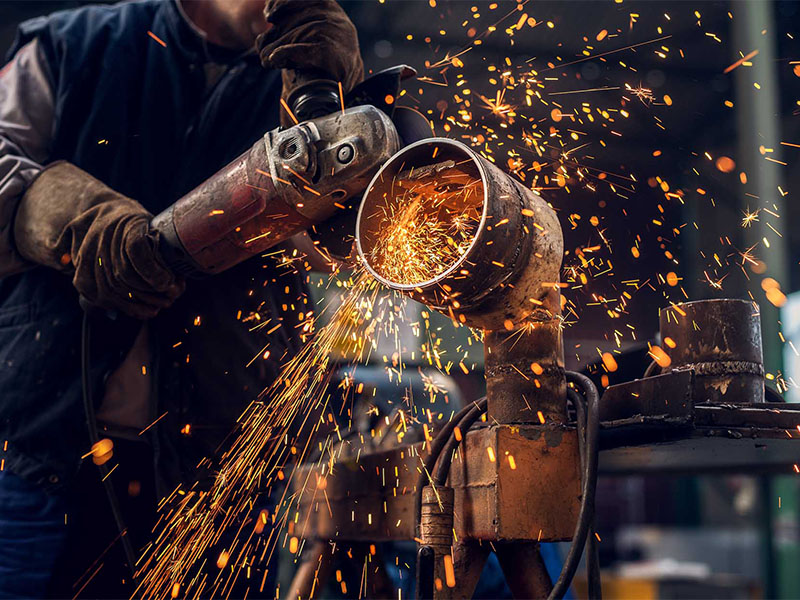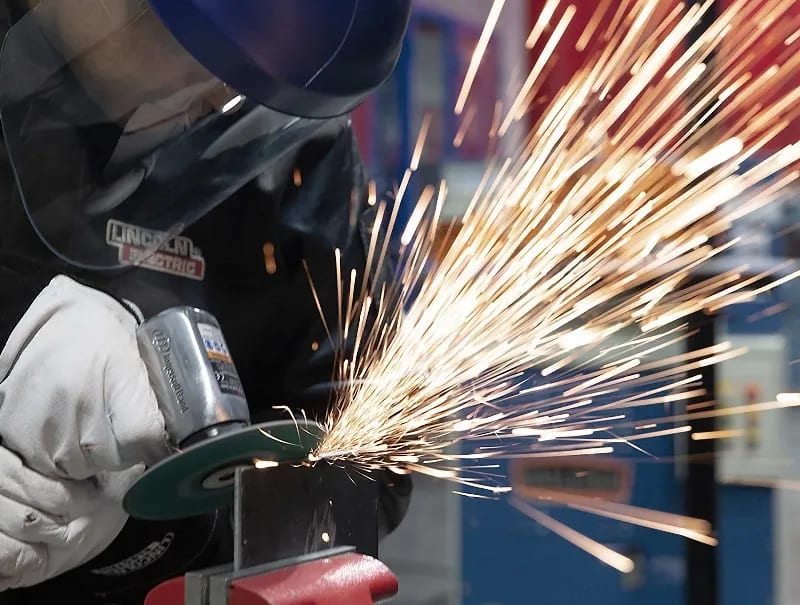Have you seen signs of incomplete fusion? Montana Mobile Welding and Repair explains how to detect them
Typical Welding Fixing Issues and Just How to Address Them Properly
Welding repair work commonly experience a series of problems that can threaten the stability of the end product. Common problems include poor penetration, porosity, and imbalance, to name a few. Each defect provides unique obstacles that need specific strategies for resolution. Comprehending these concerns is vital for welders intending to boost their outcomes and abilities. This discussion will discover these typical welding repair service problems and effective approaches to address them.
Inadequate Penetration
Inadequate infiltration takes place when the weld metal falls short to totally fuse with the base product, leading to weak joints and potential structural failures. This problem typically stems from not enough heat input, incorrect electrode angle, or improper welding speed. Welders may experience poor infiltration because of a miscalculation of the needed criteria for a specific product thickness or kind. Additionally, contamination on the base material's surface can hinder reliable bonding, worsening the trouble. To address poor infiltration, welders should guarantee proper settings on their devices and preserve a tidy job surface area. Regular examination of welds is suggested to identify any shortages early, enabling prompt corrections and the prevention of compromised architectural honesty in welded settings up.
Porosity
Porosity is a typical problem in welded joints that manifests as little gas bubbles entraped within the weld metal. This problem can endanger the honesty of the weld, causing decreased toughness and possible failure under tension. Belgrade Welding. Porosity generally arises from contamination, moisture, or incorrect welding techniques, which allow gases to escape into the liquified weld swimming pool. To deal with porosity, welders ought to assure appropriate surface prep work, maintain a tidy workplace, and make use of ideal welding criteria. Furthermore, picking the appropriate filler product and shielding gas can alleviate gas entrapment. Regular assessment and testing of welds can assist determine porosity early, assuring prompt rehabilitative activities are taken, consequently preserving the high quality and dependability of the bonded structure
Imbalance
Imbalance in welding can occur from various aspects, including incorrect setup and thermal expansion. Understanding the source is important for effective resolution. Several correction strategies are offered to realign parts and assure architectural integrity.
Reasons of Misalignment
Welding imbalance often originates from a range of underlying issues that can compromise structural honesty. One primary cause is incorrect fit-up of elements prior to welding, which can bring about voids and unequal surfaces. Variants in thermal growth during the welding process can also result in distortion, specifically if the materials being signed up with have various coefficients of development. Furthermore, poor clamping and fixturing may fall short to hold elements safely in position, leading to motion throughout welding. Poorly kept equipment, consisting of welding machines and tools, may introduce inconsistencies in the weld grain, more contributing to imbalance. Operator mistake, stemming from inadequate training or experience, can likewise play a considerable duty in creating misaligned welds.
Improvement Strategies Readily Available
Resolving misalignment properly needs a mix of rehabilitative methods customized to the details problems available. One typical technique is the usage of components or jigs to hold elements in the right placement throughout welding, making certain consistent alignment. Additionally, preheating the products can help in reducing distortion and boost fit-up. For considerable misalignment, mechanical realignment techniques, such as utilizing hydraulic jacks or clamps, can be utilized to deal with the setting before welding. Post-weld warm treatment may also be needed to ease tensions triggered by imbalance. Mindful examination and modification during the configuration phase can avoid misalignment concerns from ending up being considerable issues, advertising a smoother welding procedure and improving overall architectural honesty.
Distortion
Distortion is a typical challenge in welding that can develop from numerous variables, including unequal heating and air conditioning. Recognizing the reasons for distortion is vital for implementing reliable avoidance techniques. Resolving this issue not just enhances architectural stability however additionally improves the general top quality of the weld.
Root causes of Distortion
When subjected to the intense warmth of welding, products typically undertake changes that can result in distortion. This sensation mostly emerges from thermal development and contraction throughout the welding process. As the weld area warms up, the material expands; upon cooling, it contracts, which can create interior stress and anxieties. On top of that, unequal home heating throughout a work surface can exacerbate these stresses, causing bending or flexing. The kind of material likewise plays a considerable function; metals with differing thermal conductivity and coefficients of growth may respond in different ways, leading to unpredictable distortions. Inadequate joint layout and poor fixturing can contribute to misalignment throughout welding, increasing the chance of distortion. Comprehending these causes is crucial for reliable welding fixing and avoidance techniques.
Prevention Techniques
Effective prevention techniques for distortion throughout welding focus on controlling warm input and making sure proper joint layout. Maintaining a regular warm input aids to minimize thermal growth and contraction, which can lead to distortion. Making use of methods such as pre-heating the work surface can also reduce the temperature slope, promoting consistent heating. In addition, choosing ideal joint styles, such as T-joints or lap joints, can boost security and minimize stress and anxiety concentrations. Implementing appropriate fixturing to protect the work surfaces in position further help in keeping alignment throughout the welding procedure. Staggered welding series can distribute warmth more equally, preventing localized distortion. By applying these methods, welders can considerably lower the likelihood of distortion and enhance the total quality of their welds.
Fracturing
Cracking is a typical problem encountered in welding repair work, often arising from different variables such as incorrect air conditioning rates, product selection, or insufficient joint prep work. The event of splits can significantly jeopardize the stability of the weld, resulting in prospective failures throughout procedure. To address this problem, welders need to first examine the origin creates, guaranteeing that materials are compatible and properly chosen for the certain application. Additionally, managing the air conditioning rate during the welding process is important; quick cooling can cause stress and anxiety and result in cracking. Correct joint design and preparation likewise contribute to lessening the danger. Executing these strategies can enhance weld high quality and toughness, ultimately lowering the probability of cracking in finished weldments.

Insufficient Fusion
A significant problem in welding repair work is insufficient fusion, which takes place when the weld steel does not properly bond with the base product or previous weld passes - Belgrade Welding. This issue can result in weak points in the joint, potentially endangering the honesty of the bonded structure. Factors contributing to incomplete combination consist of have a peek at this website not enough warm input, inappropriate welding technique, and contamination of the surface areas being joined. To resolve this lidl welder problem properly, welders need to ensure correct pre-weld cleaning and surface area prep work, along with adjust their welding parameters to achieve ample infiltration and fusion. Routine assessment during the welding process can likewise aid determine insufficient fusion early, permitting timely restorative steps to enhance the general quality of the weld
Overheating
While welding repair services can boost structural integrity, overheating presents a significant obstacle that can lead to product destruction. Too much warmth throughout welding can modify the mechanical properties of steels, leading to minimized stamina, boosted brittleness, and warping. This phenomenon is particularly vital in high-stress applications where structural dependability is vital. Determining getting too hot can involve aesthetic examinations for discoloration or distortion, as well as monitoring temperature level during the welding procedure. To minimize the threats associated with getting too hot, welders must utilize ideal techniques, such as regulating warmth input, changing traveling speed, and making use of appropriate filler materials. Additionally, executing pre- and post-weld heat therapies can help recover product residential properties and enhance the total top quality of the repair service, making certain lasting efficiency and safety.
Often Asked Questions
What Are the Common Indications of a Welding Problem?

How Can I Examine My Welds for Top quality?
To evaluate welds for high quality, one can utilize visual evaluations, ultrasonic testing, and radiographic techniques. Each strategy ensures architectural integrity, recognizes problems, and validates adherence to defined criteria, inevitably boosting the integrity of the bonded joints.
What Security Safety Measures Should I Take While Welding?
When welding, one must prioritize safety by putting on appropriate individual safety equipment, guaranteeing proper air flow, protecting flammable materials away, keeping a tidy work area, and understanding surroundings to stop crashes and injuries.
Can I Repair a Weld Without Redoing the Entire Joint?
Fixing a weld without redesigning the entire joint is possible, relying on the damage (Montana weblink Mobile Welding and Repair). Methods such as grinding, adding filler product, or utilizing a welding procedure can properly deal with details flaws while maintaining the surrounding framework
What Tools Are Essential for Efficient Welding Repairs?
Necessary tools for reliable welding repair work consist of a welding maker, cable brush, grinder, safety gear, clamps, and filler products. Each tool plays a vital function in making sure quality and security during the fixing process. Porosity usually arises from contamination, wetness, or inappropriate welding strategies, which allow gases to get away right into the molten weld pool. Badly maintained tools, consisting of welding machines and tools, may present disparities in the weld grain, additional adding to imbalance. When subjected to the extreme warmth of welding, materials frequently undertake modifications that can lead to distortion. Cracking is a common issue encountered in welding repair work, commonly resulting from numerous variables such as improper air conditioning prices, product selection, or insufficient joint prep work. A significant concern in welding repair work is incomplete fusion, which occurs when the weld steel does not effectively bond with the base product or previous weld passes.